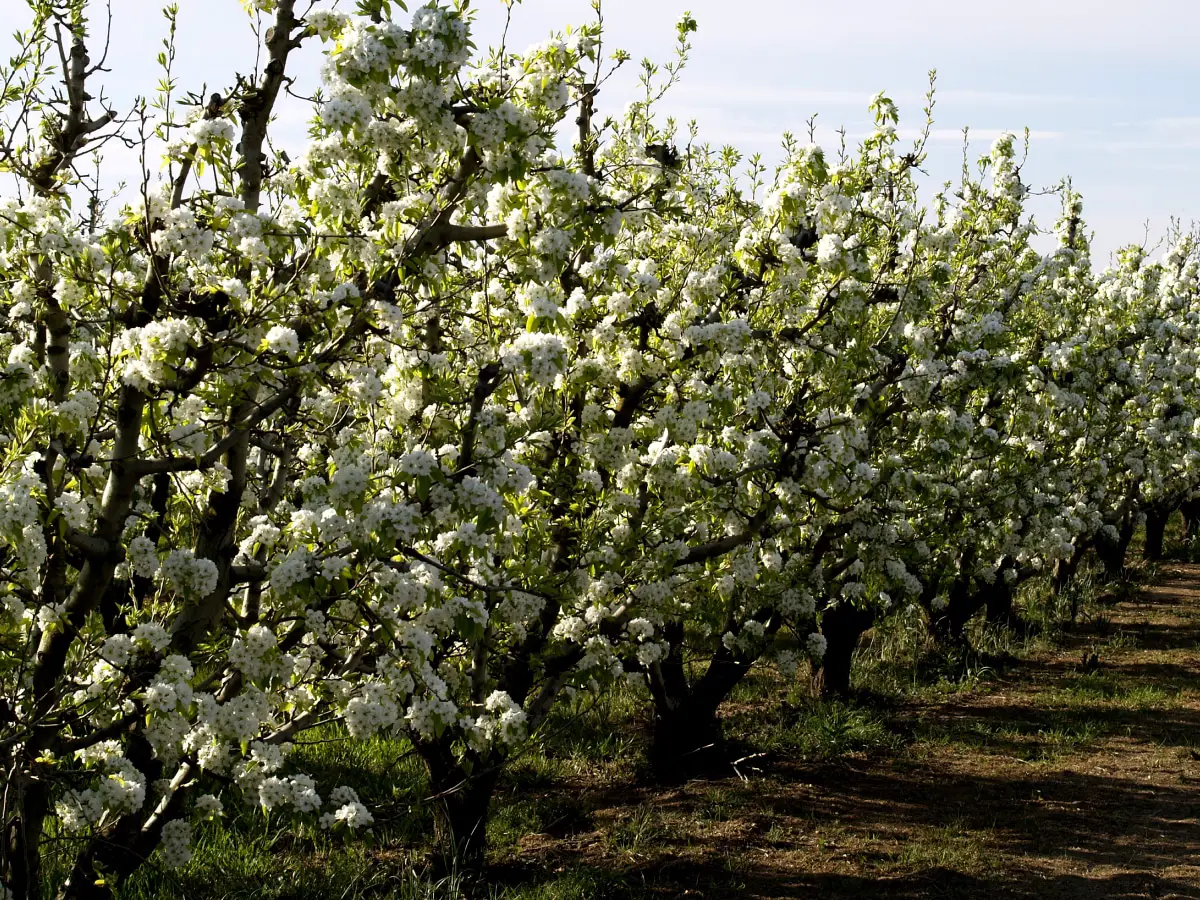

There is a lethal bacteria that generally affects pome fruit trees, especially pear and apple trees, as well as many other ornamental and wild vegetables belonging to the Rosaceae family. These plant species are highly threatened by the disease caused by this bacterium, called fire blight.
In this article we will talk about this harmful phytopathology for many crops. We will explain what the fire blight of the pear tree is, what bacteria causes it, which crops are affected, what are its symptoms and how to treat it. So if you think your plants may be affected or you just want to know more about the subject, I recommend that you keep reading.
What is pear fire blight?


The fire blight of the pear tree is a serious disease that affects not only the pear tree, but also other fruit plants. This phytopathology is characterized by being difficult to control and highly contagious. For this reason it is considered a potentially very harmful disease. In addition, fire blight can cause death in those plants whose varieties are more sensitive, especially the pear tree. Due to the severity of this pathology, it also causes significant economic losses due to the direct damage it causes to crops.
With regards to dispersal of fire blight from pear trees, this is favored by a total of four factors:
- The insects
- Birds
- The rain
- Wind
What bacteria causes fire blight?
The bacteria responsible for fire blight in pear trees are called Erwinia amylovora. Its activity is especially increased during the hottest times of the year: Spring and summer. This is because during this period, the atmospheric characteristics that occur are ideal for its propagation. These are made up of a humidity higher than 70% and temperatures that range between 18ºC and 30ºC. According to experts, Erwinia amylovora It requires quite high humidity and a temperature of approximately 23ºC for its optimal development.
On the other hand, during the colder months that correspond to autumn and winter, this bacterium that causes fire blight stops its activity. When it’s too cold, the Erwinia amylovora it adopts a latent state. Throughout the cold season of the year, this bacterium remains located on the edges of the cankers that form when the vegetative period ends.
Affected crops
Although fire blight usually affects pear trees especially, there are also other crops that can suffer from this disease. These are the vegetables that can suffer from this pathology:
- Ornamental and wild pinkish plants: Cotoneaster, Crataegus, pyracantha y SipAmong others.
- Pome fruit trees: Apple, quince, medlar and pear.
Symptoms and damage
Once the crop is affected by fire blight of the pear tree, A series of symptoms will appear that will indicate the disease. When a plant is affected by the bacteria Erwinia amylovorawe can see the following signs:
- Flowers: They wither, die, darken and / or get more wet than usual. Sometimes a yellowish-white exudate may occur at the base of the calyx or on the peduncle.
- Sheets: They suffer a very rapid necrosis that begins in the main nerve or in the border. Despite being attached to the branch, the appearance they acquire is different, as they appear burned. The same type of exudate can appear as in the flowers.
- Fruits: They can become dark or wrinkled. In addition, their development can be affected despite being attached to the branch.
- Trunk and branches: Moist cankers are formed with reddish streaks on the inside.
In summary, we can say that the first symptom to appear when a plant is affected by fire blight of the pear tree is that a supposedly young flower or fruit with necrosis appears. As the disease progresses, this necrosis appears throughout the plant.
Regarding the speed and the manifestation of the symptoms of this pathology, they will depend mainly on three factors:
- The receptivity and sensitivity of each plant.
- The amount of bacteria Erwinia amylovora that is present in the vegetable.
- And favorable climate.
Transmission


Once we have detected the presence of the Erwinia amylovora in our crops, there are a number of things that we must do to try to eradicate this pathology. Unfortunately, there is no treatment for pear blightl. The only option left is to comply with the preventive measures. These aim to prevent this disease from entering or, if necessary, quickly eliminate the first foci so that it does not develop further or infect more vegetables and crops.
We are going to comment below which are the keys to carry out a optimal preventive strategy to combat fire blight of pear trees:
- We must never introduce new crops without authorization, Whatever the species or plant material, if they come from countries or areas affected by the causative bacteria, the Erwinia amylovora.
- You have to do plantation inspections systematically to look for any signs or symptoms caused by fire blight. These should be done especially after flowering, storms or hailstorms. The latter can cause wounds in vegetables that favor the introduction of the bacteria.
- When pruning plants, extreme precautions must be taken. This includes go disinfecting the tools used, since these are a powerful source of contagion of this pathology.
- When we find a plant affected by fire blight, it is best to tear it off and destroy it immediately.
- Fertilization must also be controlled in order to avoid an excessive vigor of the vegetables. This is a factor that favors the rapid development of this disease.
As we can see, plants also suffer from diseases and pests that are lethal to them. Since they do not manifest pain like us or like animals, we must be constantly attentive to the appearance of physical signs and prevent any pathology that may affect them, such as pear fire blight. This task is especially important for farmers and small gardens.

